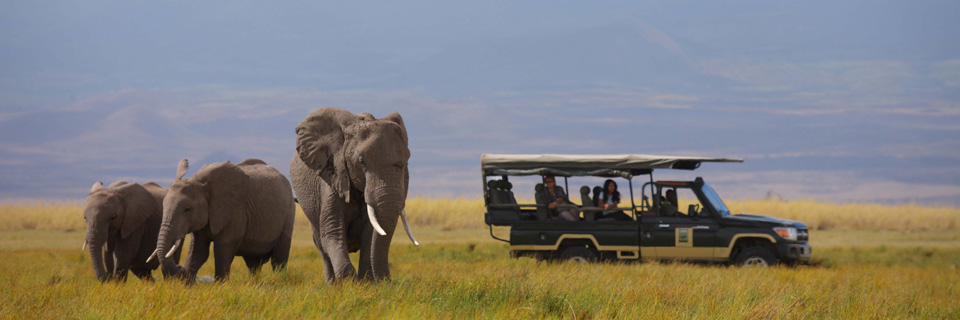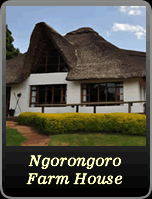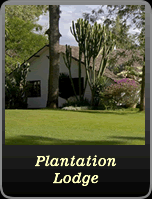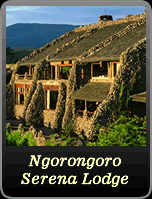
Ngorongoro Conservancy
This is quite possibly the most famous of all Africa’s conservation areas, and is worth visiting at least once in your lifetime. It is the largest intact volcanic caldera in the world, and some scientists maintain that before it erupted, it stood higher than Mount Kilimanjaro, the highest point in Africa.
Covering a mere 260km², the 600 metre deep crater is home to a permanent population of more than 30 000 animals, and is one of the only places in Africa where you stand a very good chance of seeing the “big five” (lion, leopard, buffalo, rhino and elephant) in the course of a morning or evening’s game drive. Nights on the crater rim (2,400 metres) where you find the lodges, can get icy cold, and it is one life’s great pleasures to sit around a roaring fire, drink in hand, re-living the day’s game viewing.
Unique to the crater is that the local Maasai graze their cattle on the floor, and it is not unusual to see Maasai cattle and buffalo grazing together, with a lion kill just a few hundred metres away. There are around 100 lions in the crater, and about 20 black rhino. The spectacular Lerai Forest is one of the best places in Africa to spot leopard. While game viewing is excellent year round, large parts of the crater floor become impassable after heavy rains, although this can add to the attraction, as there are fewer tourists, the light is better for photography, and the game gets concentrated on the higher ground.
The crater forms but a small part of the 8 300km² Ngorongoro Conservation Area, and travellers with time on their hands (and independent transport) should try to do a circuit heading north west to Olmoti Crater, Empakaai Crater, and, with time and a tough vehicle, to Ol Donyo Lengai, the periodically active volcano that the Maasai believe is the home of their god.





